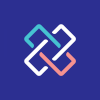Keystone Healthcare recently passed a pretty big milestone.
For 13 years now, we’ve been passionately providing the best solutions in healthcare technology with the aim of promoting better patient safety and care.
That’s in addition to some 20 year-long careers in healthcare that many of the team completed before joining us!
Over that time, you could say we’ve learned a thing or two. We’ve seen how the Australian healthcare landscape has changed, and continuously adapted our own services to meet the needs of today’s healthcare facilities - both big and small.
The Keystone team recently got together to consider our biggest lessons to date. Here are the three standout observations from our last 20 years in healthcare.
1. No matter how much education a healthcare company provides, staff always need more.
Education in healthcare never comes to an end. The healthcare industry is always evolving, and practices that are considered best practice today might not be the norm tomorrow.
Especially in the area of healthcare equipment, technology is advancing at a great pace, meaning new equipment is often available. But poorly used equipment doesn’t benefit either the patient or their carers. In fact, improper equipment use can put them both at risk.
Proper knowledge of the appropriate use of assistive medical devices is paramount for producing beneficial clinical outcomes in patients. Education on appropriate measures needed to ensure patient safety should be employed across the entire team.
This is why Keystone Healthcare offer comprehensive equipment training and education for all healthcare providers and carers.
2. Technology does not replace appropriate clinical judgment.
While technology continually improves, nursing staff can become too reliant on it. Good old human judgment is a crucial - and irreplaceable - factor in proper patient monitoring and care. Technology can assist better judgment, but it can never replace the intuition and training of staff.
It’s important for carers to understand the benefits and limitations of assistive equipment. High-risk patients should be monitored closely, regardless of assistive technologies used to notify staff of patient movement.
For example, some products such as falls monitors are designed to alert staff of patient movement using technologies such as pressure, capacitance or infrared sensing. The monitors can be used as an early detection or late detection device. Monitors can be beneficial in alerting staff of potential falls; however patients still need to be monitored when this equipment is used.
This point ties into our earlier observation - ongoing education about new healthcare safety equipment is an absolute must to ensure staff is best equipped to perform their roles.
3. Healthcare companies have a duty of care to provide reliable equipment that promotes patient safety.
As Australia’s population grows older and our healthcare system swells, we are seeing consistent growth in the need for our equipment. Our approach is to focus on patient outcomes first and foremost, supporting healthcare workers to care for their patients.
We also take a solutions-based approach to identify the most appropriate equipment to support good patient outcomes. For this we source a range of different technologies rather than simply recommending our range.
This is important because technology is constantly changing. Twenty-five years ago, restraining vests were used to keep falls risk patients tied down in bed or a chair. Thankfully, different types of technology such as capacitance, pressure, infrared and piezoelectric sensors have been adapted to create better ways of monitoring patient behaviours.
As an example, Keystone Healthcare offers an anti-rollout system that can be utilised to remind sleeping and reduced cognition individuals where their environmental boundaries are. This technology is especially prudent now that aged care settings are moving away from the use of side-rails.
